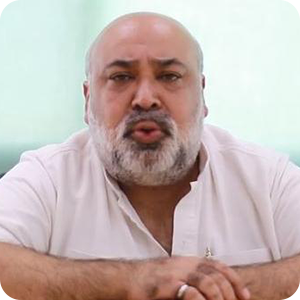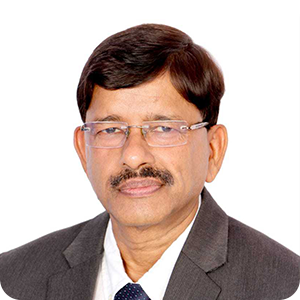The science behind our future meals encompasses a range of innovations, including lab-grown meat and cow-free milk. Is this a sign of a shift in food production from traditional farms to laboratories where the future of food relies on a variety of promising technologies such as hydroponics, cultured meat, advances in aquaculture, and the utilization of bacteria for nutrient production? How realistic is it that what people put on their plates today will no longer be relevant in a couple of years? Check out some opinions below.
Key Takeaways:
- The future of food systems is expected to undergo significant transformations driven by various factors such as population growth, climate change, resource constraints, and evolving consumer preferences.
- Sustainable and regenerative practices, alternative protein sources, technology and automation, urban agriculture and local food production, and food waste reduction are among the potential directions for the future of food systems.
- The World Food Program estimates that 345 million people will be food insecure in 2023 – more than twice as many as in 2020.
DevelopmentAid: How do you see the future of food systems?

“I agree that food demand in the face of an increasing population and a rapidly changing production environment is influencing the evolution of food systems, what it takes, and the shapes it takes. The challenge with the much-needed emerging technology is how to ensure those cultural and vested interests (driven by political and economic power and control) address persistent inequalities in inclusion, participation, and benefits. I think two of the most important things to consider when it comes to the global food system are climate change and technology. Agriculture patterns and types of crops that are to be grown will cause a significant change in field practices. Yields may go up in northern areas, but they’re expected to drop by as much as 50% in most other places. The growing seasons are expected to shrink, and food prices will rise (the impact will be dire for those spending more than half of their income on food already). Rising temperatures will prove detrimental to livestock too – dairy, eggs and meat will in turn become more and more out of reach. The same can be said about seafood, with the sea getting warmer and bifurcating. All this paints a rather bleak picture for the future. Paul Ehrlich, in his book “The Population Bomb (1968)” did say that India did not have the means to feed 200 million more people by the year 1980. We were able to avoid this as India now produces more than three times as much wheat and rice as it did then – even with its population rising by 800 million! Similar patterns can also be seen elsewhere and people are not starving in millions, as was feared before. All this was made possible through new technologies. Hydroponics, vertical farming and drip irrigation are other promising examples. Even now, the typical farmer in Africa grows one-fifth as much food per acre as a farmer in the States because they lack access to new technologies – but imagine if this gap was to be abolished. The crop yields would rise, incomes would rise and people in the world’s poorest countries would get the nutrients they need. Some behavioral aspects also come into play when discussing food utilization. For example, in developed parts of Asia, sub-Saharan Africa and in Europe, 20% of food goes to waste. And for the US, as much as 40% is wasted. While behavioral change campaigns are vital to tackle this, technology can help us here too! Some research is currently being done to extend the life of perishable food without impacting taste. I do believe the answer here is to help poor farmers increase their yields by adopting newer technologies. I believe farmers in even the most isolated areas are aware that these technologies exist and just lack the means to access them. The global food system is indeed complex and currently, a lot of the technologies available involve a trade-off between efficiency and environmental health (like fertilizers, due to nitrogen). But we need to grow more food without destroying the environment.”

“We are making our future food systems more complex, inaccessible, and vulnerable in the name of agricultural modernization, particularly for the majority of the rural poor. We can, however, change our future food systems and make them more ecologically, economically, and socially sustainable by integrating modern technology, indigenous knowledge, and resource-recycling approaches. Soil quality and the sustainable soil’s microbial system are deteriorating day by day as a result of the extensive use of chemicals (fertilizers and pesticides), making our soil less fertile and depleted. It raises our production costs while also making our farming and food systems more vulnerable to pests, floods, and droughts. We can improve soil quality, soil microbial activities, and provide better ground for farming by integrating traditional practices and indigenous knowledge to maintain biodiversity and organic resource recycling. Aside from crop production, we must work on a better and healthier food preparation and consumption system that incorporates more and more diverse grains and agriproducts to provide the total nutrients our healthy bodies require. This change creates a better market and price for producers, improves their livelihoods, and motivates them to maintain soil quality, production ecosystem, and agriculture as a whole, allowing us to maintain a sustainable future food system.”

“A new age in sustainable agriculture must be the future… large agri economies rely on exports to those in need around the world (this economical model provides no incentive for those exporting nations/conglomerates to build capacity/capability solutions in those target countries). Through inward investment supported by microloans from the World Bank and other donors, developing countries need to be supported to invest in sustainable food systems and reduce reliance on international aid which props up the agri exporters. By reducing the monopoly of large agri export-based economies and developing a sustainable internal agri market we can also improve the environment through less greenhouse gas production, less land being cleared for agriculture and fewer chemicals being washed from the land to pollute the rivers.”
See also: Agroecology – a solution to world food system’s failure

“For a nutrition secure world, the future food systems must be RESILIENT, CLIMATE SMART, CARING, INCLUSIVE AND ACCOUNTABLE. The women and children are the hardest hit. To be inclusive and caring are the lessons from novel pandemic. In this globalised world, when the climate change is real and making food less nutritious; the future food systems must ensure sustainable planet, health and dignity. Applying breakthrough research and technologies like Artificial Intelligence (AI) and machine learning to promote the old and new food systems would be future need. Like millets, the bio-fortified crops that are rich in macro and micro-nutrients’ have future potential. The meaningful integration of our traditional and modern food systems can improve access to safe and nutritious diets the world needs today.The future food systems needs to solve problems relating to all forms of hunger and malnutrition and the rising double burden on malnutrition.”

“Global population growth and climate change are having an impact on food availability and the food system. Bearing in mind that good health starts with good nutrition, improving the development of the agri-food value chain from the breeding/farming to the consumer can be a way of ensuring a sustainable food system at large scale. This approach should be supported by additional R&D to support both promising technologies and the basis of agrifood through investment in resilient and ecological agriculture. Women and young people, who make up a significant proportion of the world’s population, are key players in the development of aquaculture, particularly in developing countries where incomes and access to food are low. Promoting gender equality by eliminating social and societal barriers and involving women in decisions that affect their lives would improve young people’s and women’s access to land and financial facilities, and free up the potential workforce of key players. This would stimulate the development of micro and small enterprises and contribute to reinforce the resilience of food system.”

“Today food systems are both a significant driver and victim of the triple planetary crisis of climate change, pollution, and biodiversity loss. Current food systems produce over 30% of human greenhouse gas emissions, drive 80% of deforestation, and account for up to 70% of freshwater consumption and 80% of biodiversity loss. Without a food system transformation, Paris Agreement targets such as limiting global warming to below 2oC cannot be achieved. For the future of food systems, transformation is urgently required in order to create fully functional, healthy, sustainable food systems that increase the availability of nutritious foods, reduce food loss and food waste, enable healthy diets for all and contribute to the reduction of all forms of malnutrition. Such sustainable food systems would, in turn, lead to a reduction in deforestation and global greenhouse gas emissions, improve land and water management, promote biodiversity, and increase climate resilience.”

“Almost two years after the Food Systems Summit convened by the UN Secretary-General in September 2021, it is important to take stock in perspective. Food systems are currently undergoing a global transformation. The climate crisis has impacted food systems in various ways from production to consumption through the destruction of arable land, loss of livestock, depletion of fisheries, impacts on transportation and market access. This directly influences food production, availability, diversity, and access. At the same time, current food systems impact our environment and are drivers of climate change since more than one-third of global emissions come from food systems. One-third of the food produced worldwide is lost or wasted, directly causing 8% of global greenhouse gas emissions. We live at a crucial juncture to ensure the sustainability of our food systems by improving healthy and nutritious food production systems, promoting food security, and adopting sustainable consumption patterns throughout the agriculture food chain. For all this, the future perspective beyond achieving Sustainable Development Goal 2 Zero Hunger, food systems can also contribute to poverty reduction, inequality reduction, livelihood resilience and environmental conservation.”

“While Africa has more than 50% of its available arable land uncultivated and the world’s fastest-growing population, the continent is currently facing severe food shortages. Agriculture remains the dominant source of livelihoods, but the majority struggle to have balanced and healthy meals. Monopolized by small-scale subsistence farming with very productivity, the pressure is on global policymakers to change food systems and address the bottlenecks in agricultural production on the continent. As the world is rebuilding from the COVID-19 pandemic, this is an opportunity to address food production systems and reset the various value chains to ensure high productivity and food security. The population keeps growing, and agricultural systems really need local inexpensive solutions made available to small-scale farmers that not only increase productivity but also address land ownership and climate challenges. The responsibility rests squarely on individual governments to define the types of ecosystems they can effectively implement to build local champions and sustainable local production to support the population and improve the income-generating capacity of small-scale farmers. This is the time that the continent stops simply copying systems because they have been effective in other countries, but instead builds locally adaptable solutions.”
See also: How does your diet impact the environment? | Experts’ Opinions
Not only are food systems changing, but the modalities that international experts believe could present good opportunities are too. The competition is fierce and time is precious so, in order not to waste time and resources, DevelopmentAid suggests Individual Professional Membership. Tenders and grants for individuals, the largest job board in the international development sector, and many other options could stand in front of you today!

